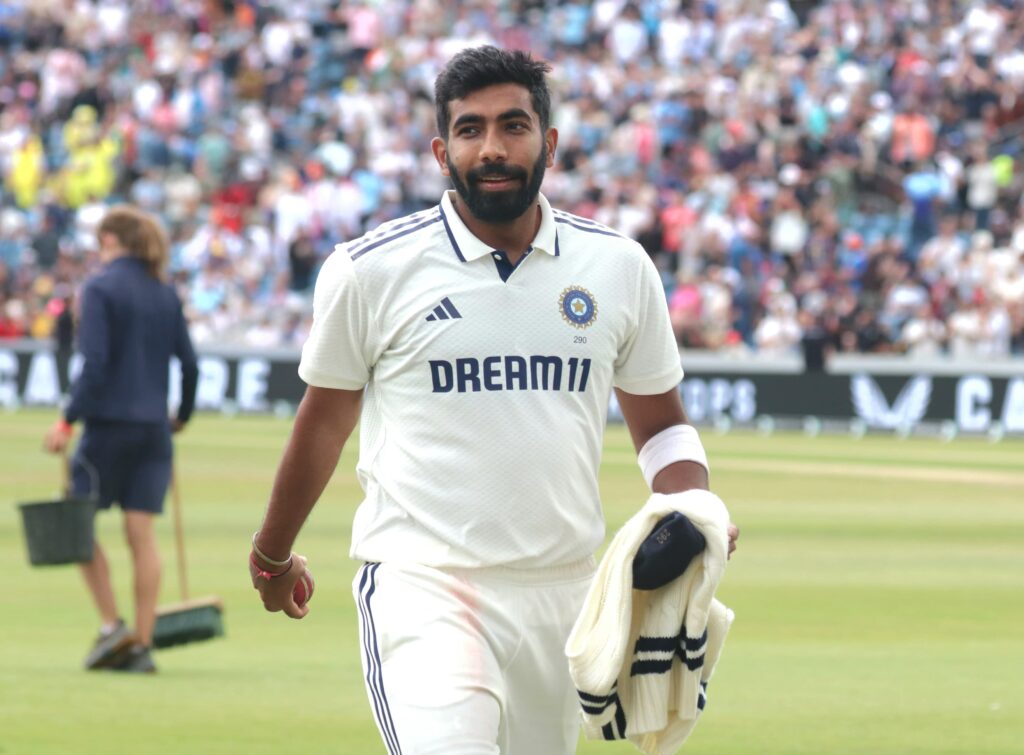
By Trisha Ghosal in Leeds
As the Headingley faithful slowly made their way out under a familiar grey sky, the scoreboard for the England vs India Test match reflected not just runs and wickets, but a contest etched in captivating drama. Day Three concluded with India holding a slender 96-run lead, two wickets down in their second innings, the match hanging finely in the balance. If anyone still harbours doubts about Test cricket’s enduring appeal in an age of instant gratification, the theatre unfolding here in Leeds offers a resounding, undeniable riposte.
This Test, the first of the series, has been an unfolding masterclass in the format’s unique rhythm and storytelling—a captivating saga of momentum shifts so pronounced they’d give any pendulum a run for its money.
Day One began with India asserting their dominance, putting England immediately on the back foot. Yashasvi Jaiswal’s early aggression set a vibrant tone, swiftly followed by Shubman Gill’s magnificent century – a display of exquisite timing and class. The disciplined batting continued, further punctuated by Rishabh Pant’s characteristically flamboyant hundred. India piled on runs, reaching a commanding position by stumps, with the narrative firmly in their favour and predictions of a colossal total swirling.
But Day Two saw the pendulum swing with dramatic, decisive force. While India looked to extend their first innings, what transpired was a stunning turn of events. They suffered a calamitous collapse, losing seven wickets for just 41 runs – a remarkable capitulation that suddenly brought England roaring back into contention. England’s spirited reply with the bat capitalised on this opening. Despite early wickets, their innings gained significant traction, narrowing the deficit. A crucial element in England’s resurgence, however, was India’s generosity in the field, as they dropped three key chances. England ended the day at 209/3, trailing by 262 runs – a vastly improved position from where they might have been.

Then came Day Three, and the story plunged deeper into its dramatic twists. The morning session saw England continue their fightback. It was during this period that Harry Brook played a magnificent innings, bravely attacking the Indian bowlers and looking destined for a home-ground century. The Headingley crowd roared its approval as he carved out runs with delightful strokes, yet he was ultimately denied, falling agonisingly one run short of the milestone. Adding to India’s woes, they continued to be profligate in the field, dropping two more chances on Day Three, bringing their total to five for the innings.
Despite these lapses, Jasprit Bumrah, India’s pace spearhead, bowled with relentless precision and fire. His spell was a masterclass in sustained pressure, subtle variations, and sheer mental fortitude, ultimately securing a well-deserved five-wicket haul. This crucial intervention helped India deny England the lead, giving the visitors a slender six-run advantage heading into their second innings.

India started cautiously but suffered an early blow when Jaiswal fell to Brydon Carse. Sai Sudharsan looked composed alongside KL Rahul, stitching a crucial partnership, only for England’s golden-armed captain Ben Stokes to strike late in the day and dismiss Sudharsan.
What other format allows for such a prolonged chess match between bat and ball? The shifts in momentum are organic—earned over hours of toil, tactical adjustments, and moments of both brilliance and blunders. The resilience of a tail-ender blocking out a hostile spell, the nerve of a bowler pushing for one last wicket, the strategic declarations, the ebb and flow of a run chase – these are the nuances that elevate Test cricket beyond mere entertainment to a profound sporting narrative.
Today at Headingley, despite rain bringing an early close, every ball felt significant. The tension was palpable as India navigated a tricky period, with KL Rahul showing composure and Shubman Gill holding fort against England’s renewed vigour. The crowd, knowledgeable and passionate, reacted to every dot ball, every near miss, every boundary with a primal energy that belies any notion of Test cricket losing its grip.
As we head into Day Four, the match is perfectly poised. Will England’s bowlers, including the impactful Josh Tongue and their captain Stokes, exploit the conditions and run through India? Or will Rahul and Gill extend the lead beyond England’s reach, setting up an unassailable target?
The beauty of Test cricket is that we don’t know the answers until the very last ball is bowled—often on the fifth day. It’s a format that demands patience, rewards skill, and ultimately delivers an unparalleled depth of cricketing drama. The Headingley Test, a perfect demonstration of the sport’s greatest format, is proving that the long game is, by far, the most compelling.



